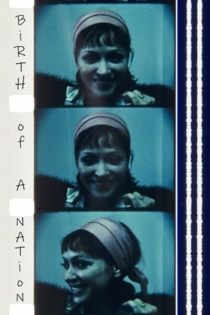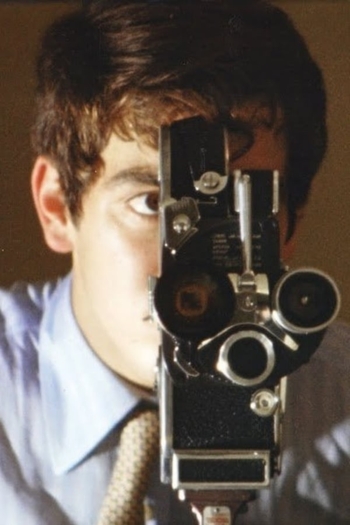
Robert Beavers
1949 (76 лет)Beavers’s use of shaped mattes to obscure aspects of the image and gelatine filters that produce varieties of coloured light are hallmarks of some of his films, many of which observe hand- and craftwork (including his own filmmaking). Born in Brookline, Massachusetts, Beavers attended Deerfield Academy before meeting the filmmaker Gregory J. Markopoulos in 1966. They moved to Europe in 1967 and removed their films from distribution; Beavers did not show his films in the United States again until 1996. Beavers made films in Greece, Belgium, Switzerland, Germany, and Italy. His early Plan of Brussels and Winged Dialogue (1967-68/2000) are multilayered psychic explorations; From the Notebook of…(1971/1998) is set in Florence and inspired by Leonardo’s notebooks. Ruskin (1975/1997) is shot at the various sites of the titular artist/critic’s work in London, the Alps and Venice. Beavers’s only film to use intertitles, the dialogic Sotiros (1976-78/1996) marks the end of his use of filters and mattes. Wingseed(1985), The Hedge Theater (1986-90/2002), The Stoas (1991-97), and The Ground (1993-2001) dwell in pastoral environments in Italy and Greece. Beavers has produced three films outside the Hand Outstretched cycle: Pitcher of Colored Light (2007), The Suppliant (2012) (both shot in the U.S.) and Listening to the Space in My Room (2013). He lives with the German filmmaker Ute Aurand in Berlin and in Massachusetts.
The Painting
Robert Beavers
Gregory J. Markopoulos
The Painting intercuts shots of traffic navigating the old-world remnants of downtown Bern, Switzerland, with details from a 15th-century altarpiece, “The Martyrdom of St. Hippolytus”. The Painting intercuts shots of traffic navigating the old-world remnants of downtown Bern, Switzerland, with details from a 15th-century altarpiece, “The Martyrdom of St. Hippolytus”. The painting shows the calm, near-naked saint in a peaceful landscape, a frozen moment before four horses tear his body to pieces while an audience of soigné nobles look on; in the movie’s revised version, Beavers gives it a comparably rarefied psychodramatic jolt, juxtaposing shots of Gregory Markopoulos, bisected by shafts of light, with a torn photo of himself and the recurring image of a shattered windowpane. (J. Hoberman, The Village Voice)
The Painting
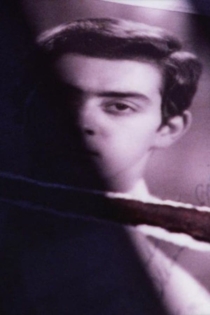
Eros, O Basileus
Gregory J. Markopoulos
Robert Beavers
Structured in nine tableaux each a study of a simple action or situation involving a lone, naked figure, the blind Eros, searching for fulfilment, for self. The objects he touches - books, paintings - can be seen as icons of the creative spirit; there is also a motor cycle and film equipment. In succeeding scenes he appears to try on identities offered by institutional doctrines of religion and social traditions of (overt) masculinity. Much of the film was constructed in-camera with a small amount of editing afterwards. An innovation was the use of in-camera fade-outs as phrase markers, not as terminal points, within a single set-up or shot.
Eros, O Basileus
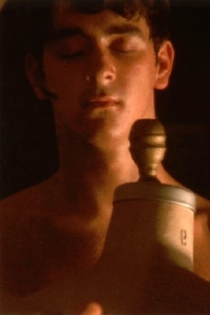
The Hedge Theater
Robert Beavers
Robert Beavers, Gregory J. Markopoulos
Beavers shot The Hedge Theatre in Rome in the 1980s. It is an intimate film inspired by the Baroque architecture and stone carvings of Francesco Borromini and St. Martin and the Beggar, a painting by the Sienese painter Il Sassetta. Beavers’ montage contrasts the sensuous softness of winter light with the lush green growth brought by spring rains. Each shot and each source of sound is steeped in meaning and placed within the film’s structure with exacting skill to build a poetic relationship between image and sound.
The Hedge Theater

Sotiros
Robert Beavers
Beavers distilled the 26-minute Sotiros in 1996 from an original 50-minute trilogy. Filmed in Athens and Peloponnesus in Greece as well as in Austria, much of Sotiros is structured around another binarism: two repeating intertitles marked "He said" and "he said." Each title introduces a set of visual phrases with loosely parallel camerawork. The images are careful and delicate studies of light patterns in a hotel suite and at a cafe, rolling hills populated by a lone shepherd, Eurostyle modernized storefronts, a blind man begging in the street. The film’s title refers to one of the appellations of the Apollo, in his role as savior or healer. - New York Press
Sotiros
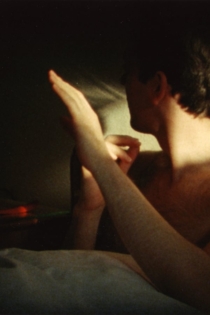
Listening to the Space in My Room
Robert Beavers
Robert Beavers
Ostensibly a portrait of a place where the artist had resided until recently, the new film by Robert Beavers conjures not only the memory but also the physical presence of those who have previously stayed there. Adhering to a solitary intimacy while simultaneously acting as an ode to human endeavour and shared impulses toward fulfillment through art, Listening to the Space in my Room is a moving testament to existence (whose traces are found in literature, music, filmmaking, gardening) and our endless search for meaning and authenticity. The film's precise yet enigmatic sound-image construction carries a rare emotional weight.
Listening to the Space in My Room

From the Notebook of...
Robert Beavers
Robert Beavers, Gregory J. Markopoulos
"From the Notebook of..." was shot in Florence and takes as its point of departure Leonardo da Vinci's notebooks and Paul Valéry's essay on da Vinci's process. These two elements suggest an implicit comparison between the treatment of space in Renaissance art and the moving image. The film marks a critical development in the artist's work in that he repeatedly employs a series of rapid pans and upward tilts along the city's buildings or facades, often integrating glimpses of his own face. As Beavers notes in his writing on the film, the camera movements are tied to the filmmakers' presence and suggests his investigative gaze.
From the Notebook of...
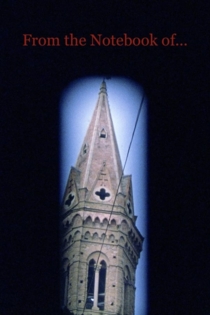
Pitcher of Colored Light
Robert Beavers
Dorothy Mahoney
“I have filmed my mother’s house and her garden. The shadows play an essential part in the mixture of loneliness and peace that exists here. The seasons move from the garden into the house, projecting rich diagonals in the early morning or late afternoon. Each shadow is a subtle balance of stillness and movement; it shows the vital instability of space. Its special quality opens a passage to the subjective; a voice within the film speaks to memory. The walls are screens through which I pass to the inhabited privacy. We experience a place through the perspective of where we come from and hear another's voice through our own acoustic. The sense of place is never separate from the moment." – R.B.
Pitcher of Colored Light

The Stoas
Robert Beavers
“The title refers to the colonnades that led to the shady groves of the ancient Lyceum, here remembered in shots of industrial arcades, bathed in golden morning light, as quietly empty of human figures as Atget’s survey photos. The rest of the film presents luscious shots of a wooded stream and hazy glen, portrayed with the careful composition of 19th century landscape painting. An ineffable, unnameable immanence flows through the images of The Stoas, a kind of presence of the human soul expressed through the sympathetic absence of the human figure.” (Ed Halter, New York Press)
The Stoas

Work Done
Robert Beavers
”Bracing in its simplicity, Work done was shot in Florence and the Alps, and celebrates an archaic Europe. Contemplating a stone vault cooled by blocks of ice or hand stitching of a massive tome or the frying of a local delicacy, Beavers considers human activities without dwelling on human protagonists. Like many of Beavers’ films, Work done is based on a series of textural transformative equivalences: the workshop and the field, the book and the forest, the mound of cobblestones and a distant mountain”. (J. Hoberman)
Work Done

Ruskin
Robert Beavers
“Ruskin visits the sites of (art critic) John Ruskin’s work: London, the Alps and, above all, Venice, where the camera’s attention to masonry and the interaction of architecture and water mimics the author’s descriptive analysis of the ‘stones’ of the city. The sound of pages turning and the image of a book, Ruskin’s Unto This Last, forcibly reminds us that a poet’s perceptions and in this case his political economy, are preserved and reawakened through acts of reading and writing”. (P. Adams Sitney)
Ruskin
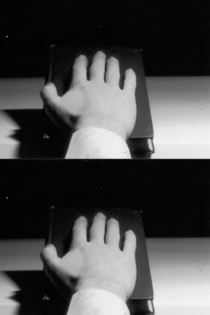
The Ground
Robert Beavers
What lives in the space between the stones, in the space cupped between my hand and my chest? Filmmaker/stonemason. A tower or ruin of remembrance. With each swing of the hammer I cut into the image and the sound rises from the chisel. A rhythm, marked by repetition, and animated by variation; strokes of hammer and fist, resounding in dialogue. In this space which the film creates, emptiness gains a contour strong enough for the spectator to see more than the image – a space permitting vision in addition to sight.
The Ground

Amor
Robert Beavers
Cutting and sewing as metaphors. Central to this work is the complex emotions surrounding love, separation, and the metonymic twinning of objects, including that of edited images and saturated sound. “AMOR is an exquisite lyric, shot in Rome and at the natural theatre of Salzburg. The recurring sounds of cutting cloth, hands clapping, hammering, and tapping underline the associations of the montage of short camera movements, which bring together the making of a suit, the restoration of a building, and details of a figure, presumably Beavers himself, standing in the natural theatre in a new suit, making a series of hand movements and gestures. A handsomely designed Italian banknote suggests the aesthetic economy of the film: the tailoring, trimming, and chiselling point to the editing of the film itself.” (P. Adams Sitney, Film Comment).
AMOR

The Suppliant
Robert Beavers
“My filming for The Suppliant was done in February 2003, while a guest in the Brooklyn Heights apartment of Jacques Dehornois. When I recollect the impulse for this filming, I remember my desire to show a spiritual quality united with the sensual in my view of this small Greek statue. I chose to reveal the figure solely through its blue early morning highlights and in the orange sunlight of late afternoon. After filming the statue, I walked down to the East River and continued to film near the Manhattan Bridge and the electrical works; then I returned to the apartment and filmed a few other details. I set this film material aside, while continuing to film and edit Pitcher of Colored Light, later I took it up twice to edit but could not find my way. Most of the editing was finally done in 2009; then I waited to see whether it was finished and found that it was not. In May 2010, I made several editing changes and created the soundtrack with thoughts of this friend’s recent death.” (RB)
The Suppliant

First Weeks
Robert Beavers
“Call them spontaneous or occasional films. I did not know if I would show this publicly when I filmed. The gift was Luke Fowler suggesting that I film his and Corin’s first child, Liath, while I visited them in Glasgow. The images are left in the order of filming, and the editing is only a few excisions.” (RB)
First Weeks

Efpsychi
Robert Beavers
Vassili Tsindoukidis
“The details of the young actor’s face – his eyes, eyebrows, earlobe, chin, etc. – are set opposite the old buildings in the market quarter of Athens, where every street is named after a classic ancient Greek playwrite. In this setting of intense stillness, sometimes interrupted by sudden sounds and movements in the streets, he speaks a single word, “teleftea”, meaning the last (one), and as he repeats this word, it moves differently each time across his face and gains another sense from one scene to the next, suggesting the uncanny proximity of eroticism, the sacred and chance.” (Robert Beavers)
Efpsychi

